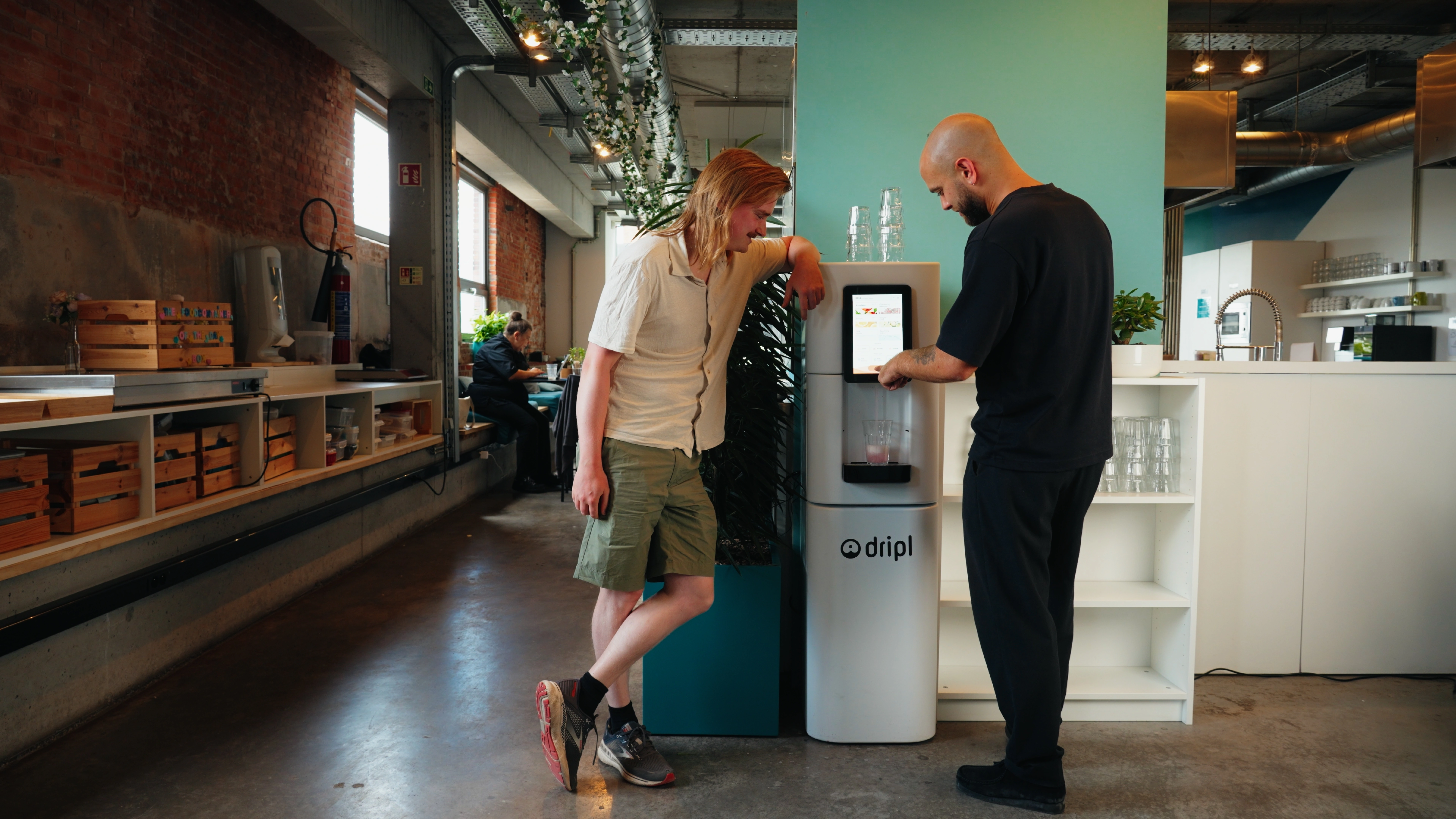All blog posts
Creating a business case for your sustainability initiative in 3 steps

Too expensive, no return on investment, not a priority... All too often, sustainability initiatives fail to reach their full potential. By developing a clear and concrete business case for your initiative, you can demonstrate its value and benefits to your company to your CEO or managing director. This blog post will teach you how to create a strong business case.
Departments fighting over budgets is a common occurrence in many companies. With limited resources, it's crucial to make a clear and compelling case for why your company should invest in a particular sustainability initiative.
Sales, marketing, and service teams can usually provide data to demonstrate the ROI of investments and request additional funding. For example, how many leads a new advertising campaign or event participation can generate.
If you want your sustainability initiative to get the green light, you'd better do your homework. Sustainability is often still viewed as a cost, which leads to initiatives being deprioritized or immediately abandoned. A solid business case that clearly highlights the benefits for your company increases the chances of your idea being warmly received.
What should your business case do?
Convince your CEO or CEO to sign off immediately. To convince your management that your sustainability initiative should actually be implemented, clearly list the reasons why the initiative is a good idea and what your company or organization will gain from it. These reasons should also be quantifiable.
What a strong business case isn't? A quick presentation of the initiative you want to implement. Taking the time to present a well-thought-out action plan, while also considering the positive impact on your business, is the best way to maximize your chances of a positive response.
1. Outline the problem
Briefly describe, at most in a few sentences, what you think could or should be done differently. If you already have one or more solutions in mind that solve the problem, include them. The more concrete your case, the more likely it is to succeed.
Some examples:
- We have a lot of pmd waste, which means we are contributing to the giant plastic soup. With a packaging-free drink dispenser from Dripl, we are significantly reducing that amount of waste;
- Our energy bills are sky-high because our consumption is very high. With better insulation and sensitizing our colleagues about saving, we can reduce costs;
- We do not have a green image and that is one of the reasons why we are losing out in the war for talent. By investing in green initiatives such as Dripl or a corporate forest, we can polish that image.
2. Demonstrate how your sustainability initiative will benefit your business
If you already have a potential solution in mind, you'll likely find a list of its benefits on the website. Including these in your business case is a good first step, but your management will also want to know if the investment offers any specific benefits for your company. Highlight these or include them, as they'll make your business case much stronger. Plus, this will give you several elements to report on later.
If you only focus on the general benefits in your business case, it's much harder to get a before-and-after picture of the positive change you've implemented in your company.
Some examples:
- Increased productivity;
- Less cost for collection or processing AND less clutter in the office;
- Lower energy costs;
- A green image works in the war for talent;
- A hipper office environment gives us a competitive advantage.
3. Define success for each of your reasons for change
The next step is to tie all of the above together with one or more success metrics. These will give you and management a clear indication of the positive benefits your sustainable innovation brings to the company. It also gives you a measurable goal to track and report on.
Some examples:
- saved 400 kilograms of waste on an annual basis, corresponding to cost savings worth amount y;
- A 10% increase on employee satisfaction scores in your next engagement survey;
- A 10% decrease in short-term absenteeism by encouraging healthier eating and drinking habits.
Make the following steps clear
As icing on the cake, you can add what steps you need to take to implement your idea. Again, the better your preparation, the more likely you are to get a yes from your management.
Getting Started
Ready to start building your business case? Be sure to download our template—it'll give you a framework for clearly presenting the information you've gathered. This way, you'll have a powerful document ready to go when you finally pitch your idea to your CEO.
As an example, you'll also get a completed copy about Dripl and our Refill Point. Would you also like to use it yourself to present Dripl to your CEO? Then be sure to refine the arguments for why your company really needs Dripl, as they may vary from company to company.
Good luck!

Too expensive, no return on investment, not a priority... All too often, sustainability initiatives fail to reach their full potential. By developing a clear and concrete business case for your initiative, you can demonstrate its value and benefits to your company to your CEO or managing director. This blog post will teach you how to create a strong business case.
Departments fighting over budgets is a common occurrence in many companies. With limited resources, it's crucial to make a clear and compelling case for why your company should invest in a particular sustainability initiative.
Sales, marketing, and service teams can usually provide data to demonstrate the ROI of investments and request additional funding. For example, how many leads a new advertising campaign or event participation can generate.
If you want your sustainability initiative to get the green light, you'd better do your homework. Sustainability is often still viewed as a cost, which leads to initiatives being deprioritized or immediately abandoned. A solid business case that clearly highlights the benefits for your company increases the chances of your idea being warmly received.
What should your business case do?
Convince your CEO or CEO to sign off immediately. To convince your management that your sustainability initiative should actually be implemented, clearly list the reasons why the initiative is a good idea and what your company or organization will gain from it. These reasons should also be quantifiable.
What a strong business case isn't? A quick presentation of the initiative you want to implement. Taking the time to present a well-thought-out action plan, while also considering the positive impact on your business, is the best way to maximize your chances of a positive response.
1. Outline the problem
Briefly describe, at most in a few sentences, what you think could or should be done differently. If you already have one or more solutions in mind that solve the problem, include them. The more concrete your case, the more likely it is to succeed.
Some examples:
- We have a lot of pmd waste, which means we are contributing to the giant plastic soup. With a packaging-free drink dispenser from Dripl, we are significantly reducing that amount of waste;
- Our energy bills are sky-high because our consumption is very high. With better insulation and sensitizing our colleagues about saving, we can reduce costs;
- We do not have a green image and that is one of the reasons why we are losing out in the war for talent. By investing in green initiatives such as Dripl or a corporate forest, we can polish that image.
2. Demonstrate how your sustainability initiative will benefit your business
If you already have a potential solution in mind, you'll likely find a list of its benefits on the website. Including these in your business case is a good first step, but your management will also want to know if the investment offers any specific benefits for your company. Highlight these or include them, as they'll make your business case much stronger. Plus, this will give you several elements to report on later.
If you only focus on the general benefits in your business case, it's much harder to get a before-and-after picture of the positive change you've implemented in your company.
Some examples:
- Increased productivity;
- Less cost for collection or processing AND less clutter in the office;
- Lower energy costs;
- A green image works in the war for talent;
- A hipper office environment gives us a competitive advantage.
3. Define success for each of your reasons for change
The next step is to tie all of the above together with one or more success metrics. These will give you and management a clear indication of the positive benefits your sustainable innovation brings to the company. It also gives you a measurable goal to track and report on.
Some examples:
- saved 400 kilograms of waste on an annual basis, corresponding to cost savings worth amount y;
- A 10% increase on employee satisfaction scores in your next engagement survey;
- A 10% decrease in short-term absenteeism by encouraging healthier eating and drinking habits.
Make the following steps clear
As icing on the cake, you can add what steps you need to take to implement your idea. Again, the better your preparation, the more likely you are to get a yes from your management.
Getting Started
Ready to start building your business case? Be sure to download our template—it'll give you a framework for clearly presenting the information you've gathered. This way, you'll have a powerful document ready to go when you finally pitch your idea to your CEO.
As an example, you'll also get a completed copy about Dripl and our Refill Point. Would you also like to use it yourself to present Dripl to your CEO? Then be sure to refine the arguments for why your company really needs Dripl, as they may vary from company to company.
Good luck!
FAQs
Get your free quote
Get your personalised quote today. We’ll get back to you soon.




-min.png)